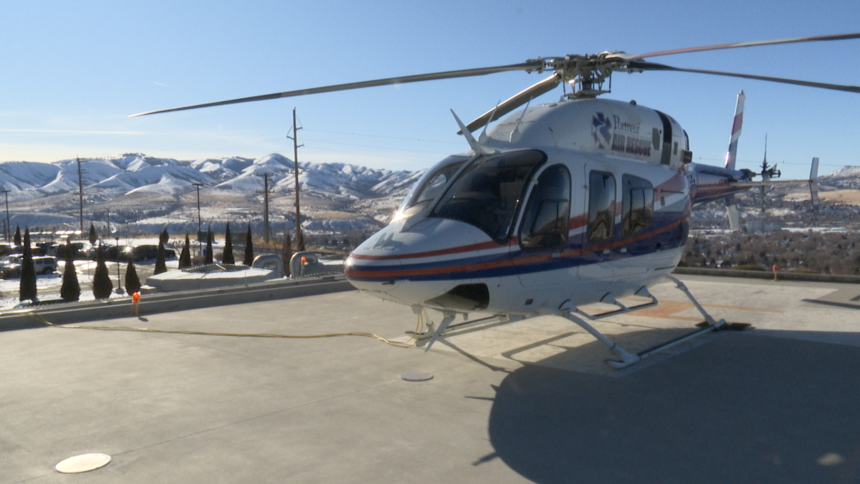‘If we can’t go, we can’t go’: Portneuf Air Rescue is ready to go, except in snow

POCATELLO, Idaho (KIFI/KIDK) - When accidents happen, as they often do, help isn't always a quick drive away. Luckily, in situations like that, Portneuf Air Rescue can cut response times in half, if not more.
"Somewhere like Afton, if a patient needed to come here, that's a two, two and a half-hour drive," PAR pilot Adam Henderson said, "it's a twenty-eight-minute flight for us."
One of the more common flights is down to Salt Lake City. What would normally be a two and half hour drive is 55 minutes "from pad to pad" for Portneuf Air Rescue.
During the winter months, calls for transports go down to around six per week. Henderson said that number is generally twice as high during the busier months. But even with a reduced load, the calls they get this time of year are "different."
"There's a lot more mountain rescues with snowmobilers and things like that because they're a lot more dangerous out there."
But it's the same winter weather that's sending people to the mountains that could keep PAR from getting to you. Before each flight, the crews spend hours monitoring the weather. The pilots must have thousand-foot ceilings and three miles of visibility, in compliance with FAA and CAMTS regulations.
"That can change -- can go up a little bit, can go down a little bit -- depending on how far we're going to be flying and exactly what we're going to be doing."
Snow and freezing rain are big problems for the rescue team since they can't fly in "known icing conditions."
"It restricts our visibility to less than that three miles that we have to have," Henderson explained. "If we can't go, we can't go."
In some cases, the crew may turn down a call even when weather permits takeoff.
"It just takes one person to not feel comfortable to take a flight, and we all turn it down," he said. "That's kind of the way that we work as a team."
When inclement weather postpones flights, PAR can move the helicopter inside their hanger at Portneuf Medical Center so that it's ready when things clear up. The process takes about five minutes, according to Henderson.
"When bad weather comes in, we don't want the helicopter covered in ice and snow. So it's easy to wheel it in and wait a few hours and then bring it back out and have it ready to go."
In most cases, the helicopter is in the air no less than 10 minutes after a call is received.
With approximately an hour and a half worth of fuel onboard, the crew can make trips to Salt Lake, and sometimes even further, depending on the weight of the patient, without a problem.
"On a day like today, we would just receive a call to go. It's kind of a green weather day where there's not much [that's] gonna happen and we can go anywhere that they need us to go."
When PAR is not out transporting patients, the crew commits two hours per incident to respond to calls from search and rescue as well as the needs of other groups such as the City of Pocatello and Idaho Fish and Game.
